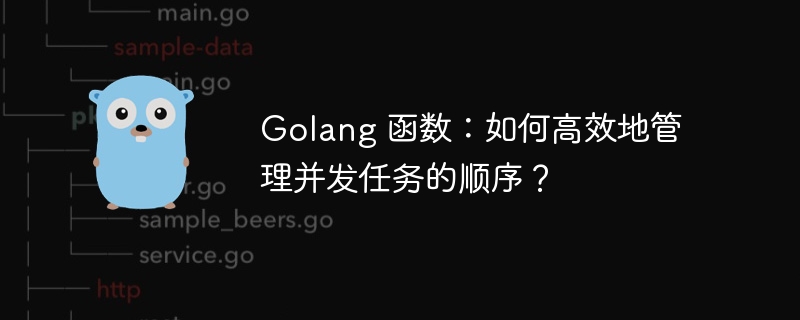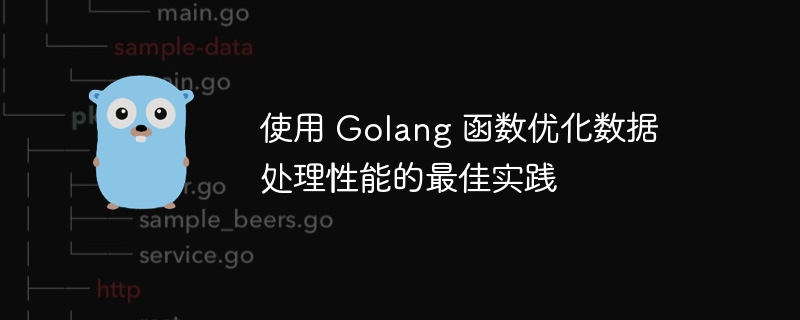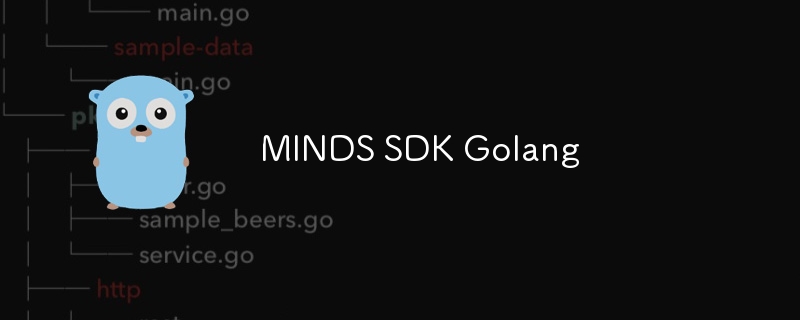并发编程中的最佳实践包括:使用同步原语保护共享数据,避免竞争条件。遵循「先获取锁」原则和使用超时机制,防止死锁。使用 defer 语句和垃圾收集器,正确处理资源,避免资源泄漏。

Go 函数并发编程的最佳实践
Go 语言以其并发的特性而闻名,这使其非常适合构建并行应用程序。但是,由于并发编程的固有复杂性,可能会出现一些常见的并发问题。
本文将探讨解决这些并发问题的最佳实践,并通过实战案例进行说明。
立即学习“go语言免费学习笔记(深入)”;
常见并发问题
- 竞争条件:当多个 goroutine 同时访问共享数据时,可能会导致竞争条件,从而更改数据的预期值。
- 死锁:当两个或更多个 goroutine 相互等待对方释放资源时,就会发生死锁。
- 资源泄漏:当不再需要资源时,若未正确释放,会导致资源泄漏。
最佳实践
1. 数据保护
- 使用同步原语(如互斥锁、通道和原子值)来保护共享数据。
- 避免使用全局变量,因为它们容易被多个 goroutine 同时访问。
2. 避免死锁
- 遵循「先获取锁」的原则,即首先获取需要的锁,然后再获取其他锁。
- 使用超时机制来防止死锁。
3. 正确处理资源
- 使用 defer 语句在函数返回前关闭文件、网络连接等资源。
- 使用垃圾收集器来释放不再需要的资源。
实战案例
共享银行账户
假设我们有一个共享银行账户,它有多个 goroutine 可以同时存款和取款。为了避免竞争条件,我们可以使用互斥锁来保护账户余额:
package main
import (
"fmt"
"sync"
)
// BankAccount represents a bank account.
type BankAccount struct {
balance int
lock sync.Mutex
}
// Deposit deposits money to the account.
func (a *BankAccount) Deposit(amount int) {
a.lock.Lock()
defer a.lock.Unlock()
a.balance += amount
}
// Withdraw withdraws money from the account.
func (a *BankAccount) Withdraw(amount int) {
a.lock.Lock()
defer a.lock.Unlock()
a.balance -= amount
}
// GetBalance returns the account balance.
func (a *BankAccount) GetBalance() int {
a.lock.Lock()
defer a.lock.Unlock()
return a.balance
}
func main() {
// Create a bank account with an initial balance of 100.
account := &BankAccount{balance: 100}
// Create goroutines to deposit and withdraw money concurrently.
go account.Deposit(50)
go account.Withdraw(25)
// Wait for the goroutines to finish.
fmt.Println(account.GetBalance()) // Output: 125
}避免死锁
假设我们有两个goroutine,A 和 B,它们需要互相通信。为了避免死锁,我们可以使用通道进行通信,并使用超时机制来防止goroutine相互等待:
package main
import (
"fmt"
"sync"
"time"
)
func main() {
// Create a channel with a buffer size of 1.
ch := make(chan int, 1)
// Create goroutine A.
go func() {
// Send a message to B.
time.Sleep(time.Second)
select {
case ch <- 1:
fmt.Println("A sent a message to B.")
default:
fmt.Println("Channel full, cannot send message.")
}
}()
// Create goroutine B.
go func() {
// Receive a message from A.
var msg int
select {
case msg = <-ch:
fmt.Println("B received a message from A:", msg)
case <-time.After(time.Second * 2):
fmt.Println("Timeout waiting for message.")
}
}()
// Wait for the goroutines to finish.
time.Sleep(time.Second * 3)
}资源释放
假设我们有一个 goroutine,它打开一个文件进行读取。为了正确处理资源,我们可以使用 defer 语句在 goroutine 返回前关闭文件:
package main
import (
"fmt"
"io/ioutil"
"os"
)
func main() {
// Open a file.
file, err := os.Open("data.txt")
if err != nil {
// Handle error.
}
// Defer closing the file until the function returns.
defer file.Close()
// Read from the file.
data, err := ioutil.ReadAll(file)
if err != nil {
// Handle error.
}
// Use the data.
fmt.Println(data)
}通过遵循这些最佳实践,可以有效地解决 Go 函数并发编程中的常见问题,并构建健壮、高性能的并发应用程序。
以上就是Golang 函数并发编程的最佳实践:如何解决常见的并发问题?的详细内容,更多请关注php中文网其它相关文章!






